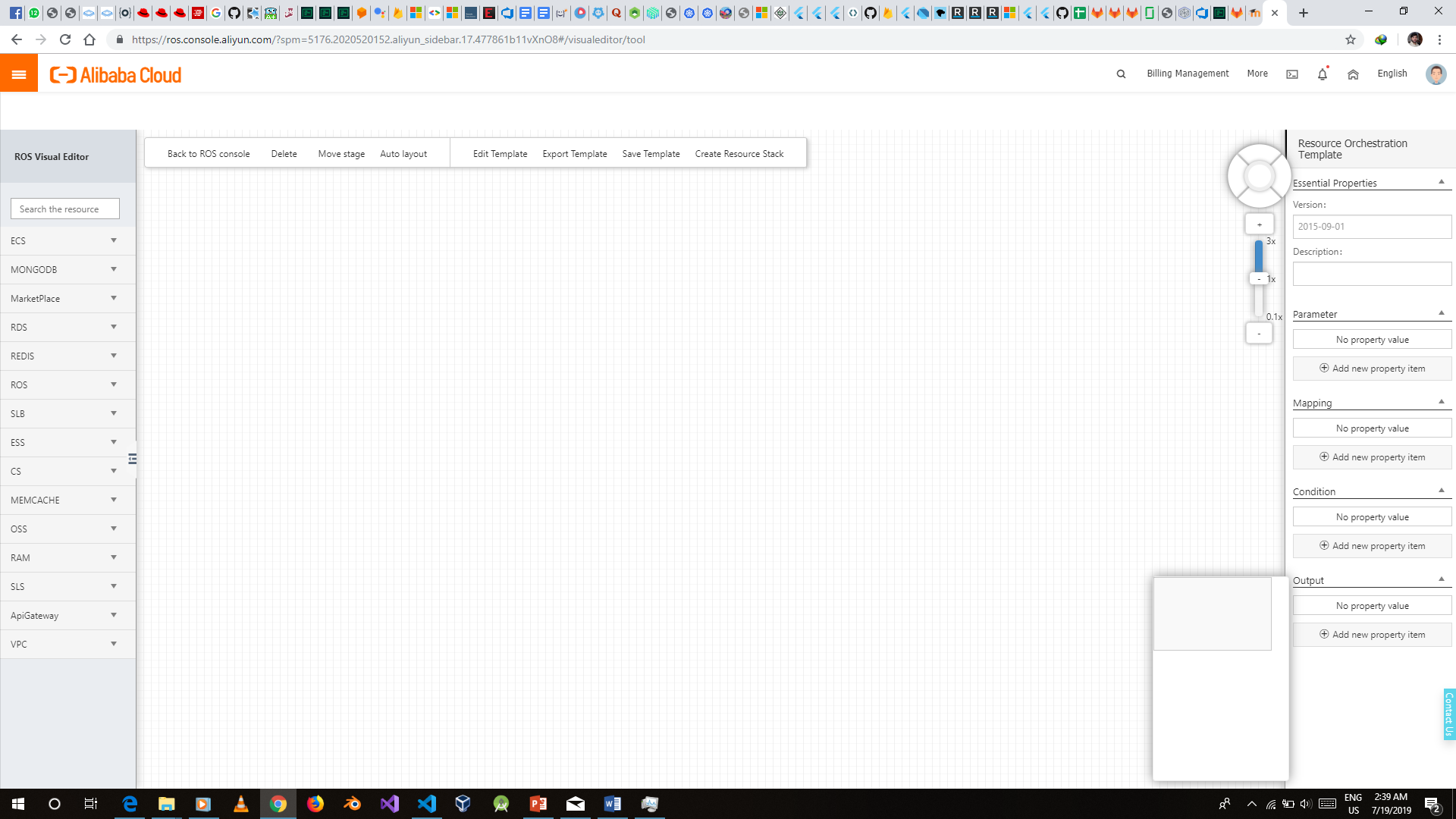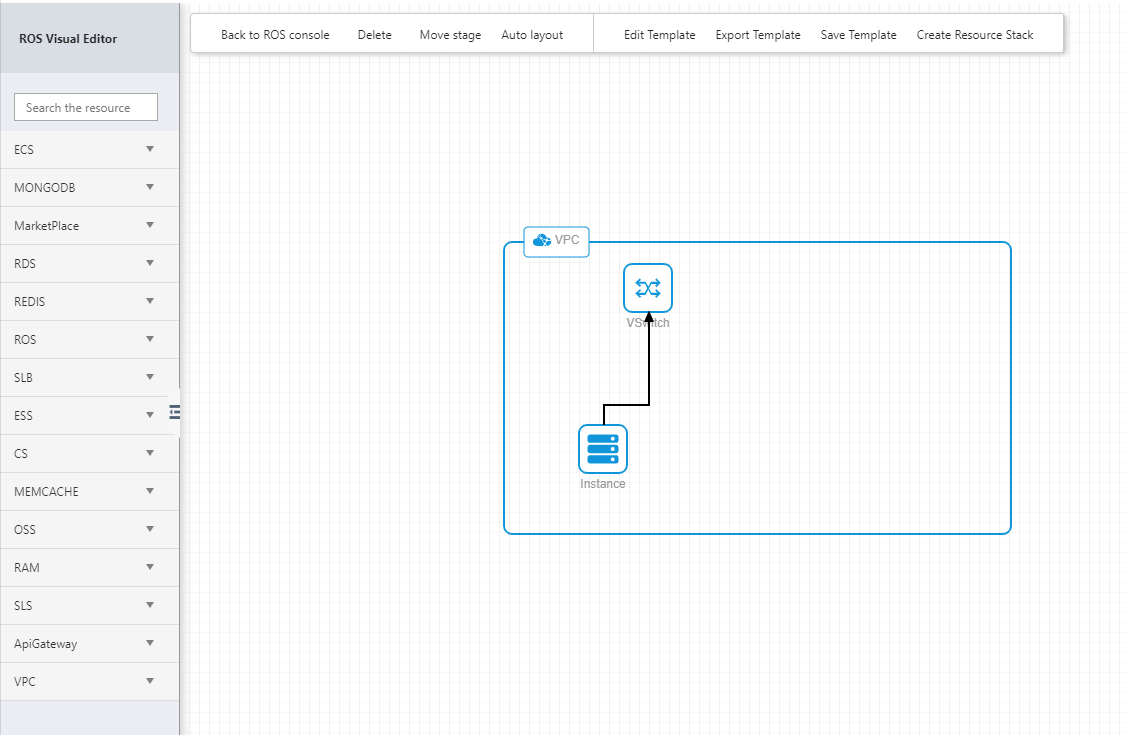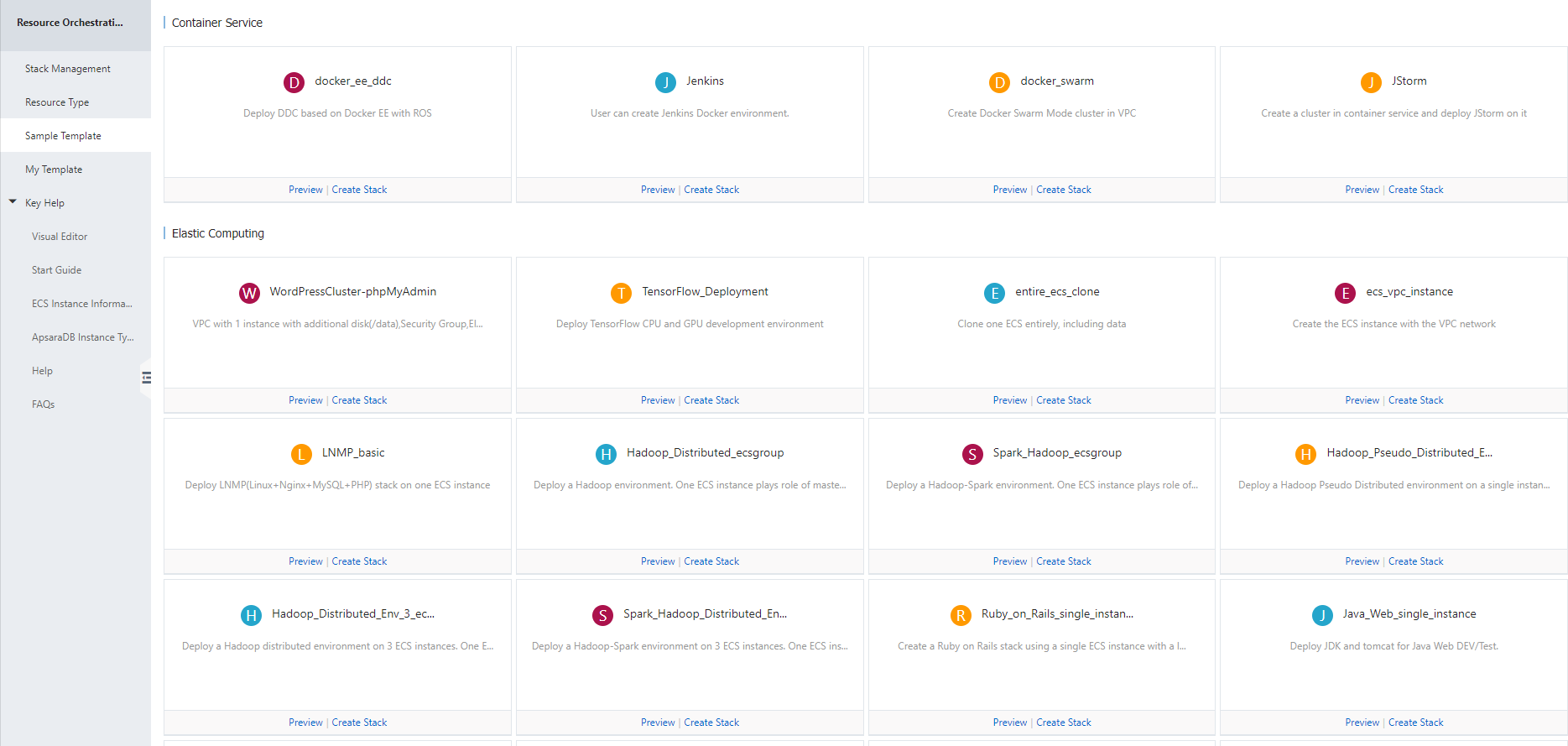By Afzaal Ahmad Zeeshan, Alibaba Cloud Community Blog author.
Over the last few decades, the concept of cloud computing has emerged out to its fullest. Likewise, the management of respective resources and infrastructure - from both the software and hardware standpoint, is one of the latest and greatest concern in this realm. All the major cloud service providers such as Alibaba cloud provides such services to the consumers via which they can deploy their applications over the network with infinite resources and with no-upfront payment caveat following pay-as-you-go model. In this article, we will go beyond the concepts of infrastructure as code, and the technologies that are made available to support these in our regular day operations.
On the contrary, this article targets to cover the visualization part of Resource Orchestration Service (ROS) service. How we can design the required infrastructure, change it, and observe these changes as they reflect time to time feasibility of our infrastructure and how our solutions are to be deployed. You must have heard this quote - a picture is better than a thousand words; this sits so fit in the context. Because this is the proven fact that your clients want clear and explanatory description no matter how many times you explain the underline system details and specifications to them. This applies more to the consultancy providers and Alibaba Cloud partners who must deploy the solutions for the clients. Your clients need to visualize and preview how their solutions are to be deployed. In most cases, you can do that using presentation builders and other similar tools. But with Alibaba Cloud, you can generate a visualization imagery of the infrastructure as you design and set it up.
For instance, while designing even a single infrastructure there will be various resource requirements such as hardware (CPUs, GPUs, RAM, storage and network bandwidth etc.) as well as software level dependencies (libraries, database/web service, API calls etc.). Despite these functional specifications, there are many other model and architectural specific details which are crucial to discuss beforehand for his approval such as if your proposed service model is either IaaS (Infrastructure as code), SaaS (software as a service) or PAAS (Platform as a service). Hence these all are the nitty-gritty details which can be explained better if described in a diagrammatic form.
I have previously worked in organization and with a couple of organizations and I can say that architects usually enjoy speaking with a diagram in hand. We used to create the diagrams on the presentation slides and then use them to discuss whether the architecture was suitable for deployment or we needed some modifications. This similar feature is provided out of the box in Alibaba Cloud for design of the solutions. Not just it lets you design the solutions, you can use the same visual representation of the architecture and deploy the solution on the cloud-Alibaba Cloud infrastructure will start the deployment process right away.
Visual editor helps you to create visualization for your desired infrastructure using a tool called Visual Editor which is available in resource orchestration service (ROS) console.

Editing your template using Visual editor gives you super clear understanding of the architectural design depending upon different resources. The drag-and-drop interface gives you high flexibility to make relationship and connections among different resources. While drawing your requirements you will be clearly feeling the joy of creating the complete resource diagrams without even caring about the syntactical barriers and rules. You can pull down the instances for the subscriptions or services that Alibaba Cloud is offering to you,

Other than this, visual editor comes along some super flexible settings and feature, such as stacking your templates, sorting out dependencies issues among your resources automatically and presenting a high level as well as the underline representation of your overall system.

This is a sample structure for a solution deployment that I created and stored in the Alibaba Cloud itself. It is a naïve solution, but you can see that it shows the deployment will contain a VPC, a switch for the VPC and an instance of the compute service that will itself then have some properties and settings that can help with the deployment of the service on the infrastructure.
A quick tip for the beginners, if you are wanting to explore the service to learn it, you can always visit the Sample Templates section using the navigation in the left navigation bar, and you will find a couple of sample templates that you can use to explore the service or to create the services on the cloud.

You can use any of these templates and preview the template. Template can then be deployed online to the cloud.
Although we have discussed enough benefits and requirements for the service and tool, now let us discuss how the service offering of Alibaba Cloud support us in the decision making for the cloud solution planning and deployment.
As ROS manages stack of resources - a group of all the resources and dependencies. This way, we can create, modify, delete or clone any group on the cloud in a quite handy way. Furthermore, to follow the DevOps practices becomes super-flexible, because we can clone any environment; development, testing, production in an efficient way which makes the overall process of application migration and scaling straightforward and painless. Moreover, when it comes to designing the visual template-a draft which is not just a flow/block diagram but the complete yet dynamic visualization of the overall dependencies which are the part of your infrastructure.
Since the templates are used to deploy the services on the cloud too, you can use the same template to deploy your solution and perform testing on them as needed. This can drastically improve the overall structure of your DevOps teams in the organization.
ROS not just configures all the defined resources, but your resource stack template predicts the missing and expected resources as well. Such as, required ECS instances, ApsaraDb for RDS instances, services for fault tolerance and load balance etc. Not just these, but ROS has been preconfigured to test the template before deploying it so it can guide you about the places where a certain solution an exist. For example, it tells you to deploy a VPC for a service that can only be deployed behind a VPC and so on. This can save your time, and it can help your engineers do more… By not making mistakes in the design phase, of course.
Also, it defines the relationships among these resources. That way, you do not need to worry either about the creation part nor the configuration part, Alibaba Cloud resource orchestration service manages this all itself-all that you need to provide is the template file that you have already verified and checked against during the design phase.
ROS provides a wide range of Alibaba Cloud resources, and even with this extensive range of resources their management does not sound complex because of it provides management console API as well as command line interface. Other than this, for the security measures, ROS supports two types of accounts - primary accounts and sub accounts to isolate different user roles to leverage security.
As previously we mentioned that most consultancy agencies might require to present a solution template or architecture diagram to their customers before proceeding with the contract negotiations, you can include your customers and clients as sub accounts and grant them read access for the templates. While you maintain the primary accounts and most of the privileges, your customers can still preview and review the solution without making any unnecessary changes to the overall architecture.
Take a startup company, they are full of energy and ideas, they hire highly skilled developers but of course they are not equipped with resources and infrastructure. In this case, the ideal situation would be to use Alibaba Cloud orchestration service, which provides pay-as-you-go model with high availability and scalability of all the resources you required to use. You do not need to worry about individual costs either for software services or for hardware infrastructure.
Resource Orchestration Service not only just provides a simple way to visualize the products-if you believe or understand this to be the only purpose of this product, then you might have missed the overall point of this post-the ROS service instead provides a complete DevOps suite for infrastructure management. You can quickly design, deploy, version control, rollback and secure the infrastructure while only paying for the services that you purchase from the cloud.
Similarly, with large-scale enterprises, they want to be business centric instead of investing their time and resources on infrastructure setup, management and recovery. They prefer to ponder ideas for business growth, for which, Alibaba Cloud resource orchestration framework is nonetheless the best option to go with. Moreover, ROS creates high availability VPC stack, which manages everything, such as, server-side load balancing, auto scaling, ECS, deployment of web instances (e.g. WordPress and phpMyAdmin etc.) with a single click.
With the utilization of the DevOps practices of infrastructure as code, because our infrastructure is now in JSON format, unlike binary or configured one for a specific vendor in-portal-the topic we explored and covered in the previous article-you can easily perform all sort of management tasks on the infrastructure, in case a disaster happens.
Managing Application Configuration in Distributed Environment

2,599 posts | 765 followers
FollowNick Fan - January 17, 2023
Alibaba Cloud Community - December 7, 2021
5544031433091282 - August 16, 2022
Alibaba Cloud Native - September 12, 2024
Alibaba Cloud Native Community - November 11, 2022
Alibaba Cloud Community - March 21, 2022

2,599 posts | 765 followers
Follow ROS(Resource Orchestration Service)
ROS(Resource Orchestration Service)
Simplify the Operations and Management (O&M) of your computing resources
Learn MoreLearn More
Learn More
More Posts by Alibaba Clouder